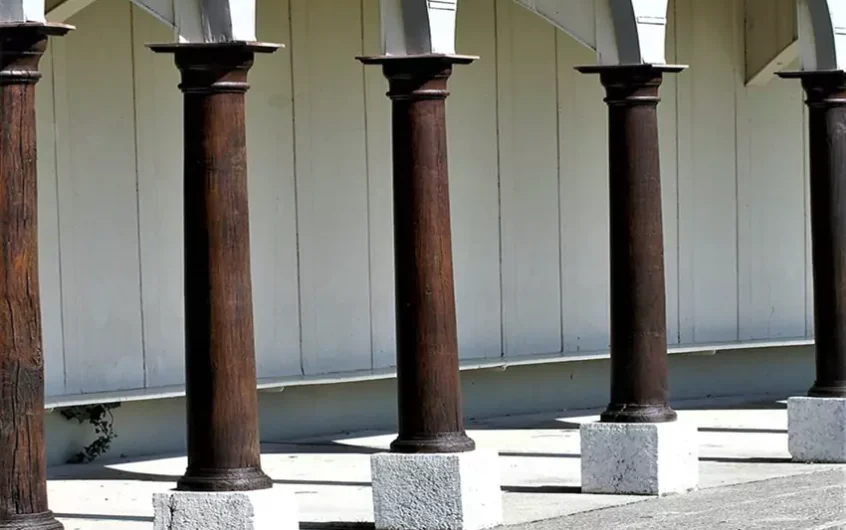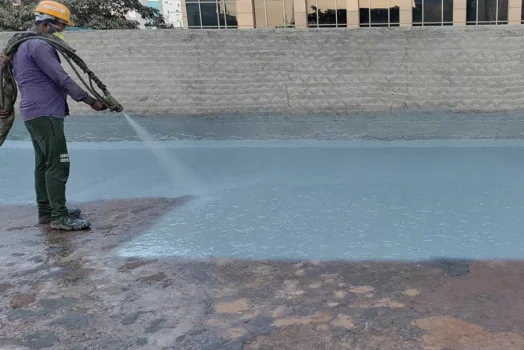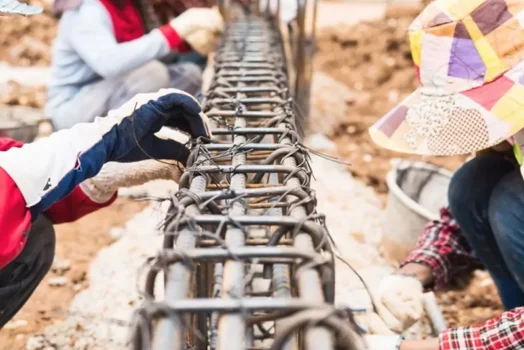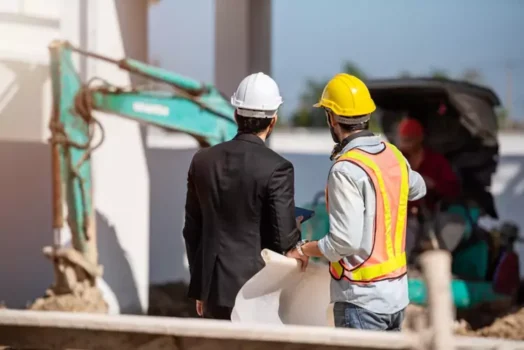Table of Contents:
- Understanding Carbon Fiber Wrapping
- Key Components of Carbon Fiber Wrapping
- How Carbon Fiber Wrapping Works
- Applications of Carbon Fiber Wrapping
- Advantages of Carbon Fiber Wrapping
- Why Choose Gubbi Civil Engineers
- Conclusion
- FAQs (Frequently Asked Questions)
In the world of civil engineering, structural repair and reinforcement have witnessed significant advancements in recent years. As buildings and infrastructure age, they will require inspection and structural repairs to ensure they remain strong and effective enough to last for many more years.
One revolutionary method for enhancing structural strength and extending the lifespan of various components is “Carbon Fiber Wrapping”, an innovative technique provided by Gubbi Civil Engineers, India’s leading contractor for structural repairs and maintenance services. In this comprehensive article, we will dive deep into the world of carbon fiber wrapping, exploring how it works, its applications, and the benefits it offers to the construction and infrastructure industries.
Understanding Carbon Fiber Wrapping
Carbon fiber wrapping, also known as carbon fiber reinforcement or carbon wrapping, is a structural strengthening and rehabilitation method that uses Carbon Fiber-Reinforced Polymer (CFRP) materials to fortify and support various structural elements, such as concrete columns, beams, bridges, and pipelines. This technique combines the strength and lightness of carbon fibers with epoxy resin to create a robust, composite material.
It’s important to note that carbon fiber wrapping for columns is a versatile and effective reinforcement method commonly used in structural repairs and maintenance of all types of infrastructures.
Key Components of Carbon Fiber Wrapping
- Carbon Fiber Sheets:
The core component of carbon fiber wrapping is carbon fiber sheets. They are often available in rolls. These sheets consist of tightly woven carbon fibers, offering an exceptional strength-to-weight ratio. Carbon fibers are renowned for their high tensile strength, making them the perfect choice for structural reinforcement. - Epoxy Resin:
The carbon fiber sheets are soaked with epoxy resin. This resin serves as a binding agent, ensuring a secure and durable attachment to the surface being reinforced. It also plays a crucial role in the curing process. - Primer or Adhesive:
A primer or adhesive is applied to the target surface before carbon fiber wrapping. This layer facilitates the bonding of the carbon fiber sheets to the structure, enhancing the overall integrity.
How Carbon Fiber Wrapping Works
The process of carbon fiber wrapping can be broken down into several key steps:
- Surface Preparation
Before applying carbon fiber wrapping, the surface must be carefully prepared. The steps include:- A thorough cleaning to remove dirt, dust, and debris.
- Removal of loose or deteriorated materials.
- Ensuring the surface is completely dry and free from contaminants.
- Primer Application
The next step is to apply a specialized primer or adhesive to the prepared surface. This primer plays an important role in establishing a strong bond between the existing structure and the carbon fiber sheets. - Carbon Fiber Sheet Application
The soaked carbon fiber sheets are carefully applied to the prepared surface. This can be done manually or with the help of specialized equipment. The orientation and layering of the carbon fiber sheets are carefully designed to provide the necessary strength and reinforcement as per the requirement. - Curing
After the carbon fiber sheets are applied, they undergo a curing process. This process involves a chemical reaction between the epoxy resin and a curing agent. As a result, the material hardens and creates a strong composite structure that bonds smoothly with the existing surface. - Quality Control
Ensuring the quality and effectiveness of the carbon fiber wrapping is essential. Inspections and tests are performed to confirm that the wrapping has been applied correctly and meets the required specifications. This rigorous quality control process guarantees the safety and longevity of the repaired structure.
Applications of Carbon Fiber Wrapping
Carbon fiber wrapping is a versatile technique with numerous applications in the construction and infrastructure industries. Here are some of the key areas where it is commonly used:
- Carbon Fiber Wrapping for Columns
Concrete columns play a vital role in supporting structures, but over time, they become weak due to various factors like environmental conditions or structural damage. Carbon fiber wrapping for columns offers an effective solution for reinforcing and restoring the strength of these columns. It not only extends their service life but also enhances their load-bearing capacity. - Reinforcing Beams and Bridges
Beams and bridges are often affected due to heavy loads and extreme conditions. Carbon fiber wrapping can be used to strengthen and repair these structures, ensuring their ability to withstand the high pressure placed upon them. This method is particularly valuable in infrastructure projects, where minimizing downtime is essential. - Pipeline Repair and Rehabilitation
Pipelines, whether used for water supply, sewage, or industrial purposes, can deteriorate over time. Carbon fiber wrapping can be employed to repair and reinforce pipelines, preventing leaks, cracks, and structural failure. This approach is highly cost-effective compared to the replacement of entire pipeline systems. - Automotive Component Strengthening
In the automotive industry, carbon fiber wrapping is used to enhance the strength and durability of vehicle components. This not only reduces the weight of the parts but also improves their performance and longevity.
Advantages of Carbon Fiber Wrapping
Carbon fiber wrapping offers several advantages for structural repair and reinforcement projects. Let’s explore some of the key benefits:
- Exceptional Strength-to-Weight Ratio
Carbon fiber is celebrated for its remarkable strength-to-weight ratio. It is significantly stronger than steel while being much lighter. This characteristic makes it an ideal material for reinforcing structures without adding excessive weight. - Corrosion Resistance
CFRP materials are highly resistant to corrosion, which is a significant advantage in environments where structures are exposed to moisture, chemicals, or harsh weather conditions. This resistance extends the service life of the reinforced components. - Rapid Application
Compared to traditional methods of structural repair and reinforcement, carbon fiber wrapping is a quicker solution. The application process is efficient, and it minimizes downtime, reducing disruptions to ongoing operations. - Non-Intrusive
Carbon fiber wrapping is a non-intrusive method. It doesn’t require major demolition or disruption to the existing structure. This makes it a practical choice for repair projects in operational facilities. - Cost-Effective
The cost-effectiveness of carbon fiber wrapping is a significant advantage. It often proves more economical than extensive structural repairs or complete component replacements. The reduced labor and materials costs contribute to its cost-efficiency. - Customizable Solutions
Carbon fiber wrapping is highly adaptable and can be customized to meet the specific requirements of a project. The number of layers and the orientation of carbon fiber sheets can be adjusted to address the unique needs of the structure.
Why Choose Gubbi Civil Engineers
Gubbi Civil Engineers makes use of the best carbon fiber wrapping, especially for columns, technology in India. As a leading contractor and service provider for structural repairs, Gubbi offers a range of advantages to its clients:
- Expertise and Experience
With a team of highly skilled engineers and technicians, Gubbi Civil Engineers has brought a wealth of expertise and experience to every project since 1993. Their extensive knowledge in structural repair and carbon fiber wrapping for columns ensures the highest quality results. - Advanced Technology
Gubbi Civil Engineers invests in the latest equipment and advancements in carbon fiber wrapping technology. This commitment to innovation ensures that clients receive the best solutions available. - Comprehensive Services
From initial assessments and project planning to the execution of carbon fiber wrapping and quality control, Gubbi Civil Engineers provides comprehensive services. They guide clients through every stage of the project, ensuring transparency and satisfaction. - Proven Success
Gubbi Civil Engineers has a track record of successful projects in India. Their client testimonials and case studies showcase the effectiveness of carbon fiber wrapping technology. - Commitment to Sustainability
Carbon fiber wrapping contributes to sustainability by extending the life of existing structures and reducing the need for new materials and construction. We are committed to eco-friendly practices and solutions.
Conclusion
Carbon fiber wrapping is a transformative technology that enhances structural strength, extends the lifespan of various components, and provides cost-effective solutions for the construction and infrastructure industries. Gubbi Civil Engineers, India’s leading contractor for structural repairs, is at the forefront of this innovative approach, offering expertise, cutting-edge technology, and comprehensive services.
By choosing carbon fiber wrapping from Gubbi Civil Engineers, clients can ensure the long-lasting and reliability of their structures while contributing to sustainable construction practices. Carbon Fiber Wrapping is a versatile and forward-thinking solution that is shaping the future of civil engineering in India.
FAQs (Frequently Asked Questions)
Q1. What is carbon fiber wrapping, and how does it work?
A1. Carbon fiber wrapping is a technique used to strengthen and rehabilitate structural elements using carbon fiber-reinforced polymer (CFRP) materials. It involves applying soaked carbon fiber sheets to a prepared surface, which are then cured to create a strong composite bond.
Q2. What are the primary applications of carbon fiber wrapping?
A2. Carbon fiber wrapping is commonly used for reinforcing concrete columns, beams, bridges, pipelines, and automotive components. It is effective in extending the life and load-bearing capacity of these structures.
Q3. Why is carbon fiber chosen for wrapping over other materials?
A3. Carbon fiber is preferred for its exceptional strength-to-weight ratio, corrosion resistance, and durability. It offers a lightweight yet robust solution for structural reinforcement.
Q4. How does Gubbi Civil Engineers differ from other service providers in carbon fiber wrapping?
A4. Gubbi Civil Engineers stands out due to its expertise, cutting-edge technology, comprehensive services, and a proven track record of successful projects for more than 30 years in this industry. They offer end-to-end solutions and a commitment to sustainability.
Q5. Is carbon fiber wrapping a cost-effective solution for structural repair and reinforcement?
A5. Yes, carbon fiber wrapping is often more cost-effective than traditional methods, such as extensive repairs or component replacements. It reduces labor and materials costs while minimizing downtime.
Q6. How long does the curing process take when carbon fiber wrapping is applied?
A6. The curing process typically depends on the specific epoxy resin used and environmental conditions. It can range from a few hours to a few days. Gubbi Civil Engineers ensures that the curing process is carefully monitored to meet project requirements.
Q7. Can carbon fiber wrapping be customized for different projects?
A7. Yes, carbon fiber wrapping is highly customizable. The number of layers and the orientation of the carbon fiber sheets can be tailored to meet the unique requirements of each project, ensuring optimal results.
Q8. Is carbon fiber wrapping an environmentally friendly solution?
A8. Yes, carbon fiber wrapping contributes to sustainability by extending the lifespan of existing structures, reducing the need for new construction, and minimizing material waste. Gubbi Civil Engineers is committed to eco-friendly practices.
Q9. Are there any limitations to the application of carbon fiber wrapping?
A9. While carbon fiber wrapping is versatile, it may not be suitable for all structural issues. The feasibility of using this technique depends on the specific conditions and requirements of the structure, which can be assessed by experts.
Q10. How can I get started with a carbon fiber wrapping project with Gubbi Civil Engineers?
A10. To initiate a project or inquire about carbon fiber wrapping services, you can contact Gubbi Civil Engineers through their website or by reaching out to their dedicated team of experts. They will guide you through the process and provide a tailored solution for your needs. Contact us today at +91 7498523824 or [email protected]




